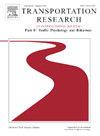安全骑行的艺术:对摩托车安全论述中的先进骑手辅助系统进行批判性审查
IF 3.5
2区 工程技术
Q1 PSYCHOLOGY, APPLIED
Transportation Research Part F-Traffic Psychology and Behaviour
Pub Date : 2024-11-01
DOI:10.1016/j.trf.2024.11.003
引用次数: 0
摘要
在道路创伤统计数据中,摩托车驾驶员所占比例仍然过高。然而,在考虑全系统行为的安全系统框架和道路安全战略中,摩托车往往被忽视。尽管汽车制造商对其技术进行了测试,但这些测试主要评估的是是否达到了设计目标,而不是对骑行者的实际安全影响,这一点仍不清楚。本研究考察了摩托车制造商如何介绍和谈论高级驾驶员辅助系统(ARAS),并探讨了潜在的安全影响。共提取了 17 家摩托车制造商(8 个原产国)的网站内容,并使用主题网络分析法进行了分析。结果表明,除了现已被广泛强制使用的防抱死制动系统(ABS)外,几乎没有将 ARAS 功能与观察到或测量到的安全效益直接联系起来。尽管如此,ARAS 仍被宣传为对安全具有积极意义。能力、控制和性能等主题经常与安全叙事联系在一起,表明这些领域的改进并不会损害驾驶者的安全。安全是通过运动美学、骑手与摩托车更好的融合以及克服长期存在的问题和不和谐来实现的。现代摩托车就像一个人骑着一台有两个轮子的电脑。随着摩托车使用量的增加和碰撞事故的持续发生,越来越有必要将摩托车运动(包括车辆方面)更好地纳入道路安全战略、骑手指南和手册中。本文章由计算机程序翻译,如有差异,请以英文原文为准。
The art of riding safely: A critical examination of advanced rider assistance systems in motorcycle safety discourse
Motorcyclists remain overrepresented in road trauma statistics. However, motorcycles are often overlooked in safe systems frameworks and road safety strategies that consider system-wide behaviour. Although vehicle manufacturers test their technologies, these tests primarily assess whether design objectives are met, not the real-world safety implications for riders which remain unclear. This study examined how motorcycle manufacturers present and talk about advanced rider assistance systems (ARAS) and explored potential safety implications. Website content from a total of 17 motorcycle manufacturers (8 home countries of origin) were extracted and analysed using thematic networks analysis. The results show that, apart from the now widely mandated anti-lock braking system (ABS), few ARAS features were linked directly to observed or measured safety benefits. Despite this, ARAS were promoted as safety positive. Themes of capability, control, and performance were frequently linked to narratives of safety, suggesting that improvements in these areas did not compromise rider safety. Safety was conveyed as something that was being achieved through kinesthetics, better rider-motorcycle integration, and overcoming long-standing issues and discord. The modern motorcycle is akin to a person riding a computer with two wheels. As motorcycle use increases and crashes persist, there is a growing need to better incorporate motorcycling, including vehicle aspects, in road safety strategies, rider guides and handbooks.
求助全文
通过发布文献求助,成功后即可免费获取论文全文。
去求助
来源期刊
CiteScore
7.60
自引率
14.60%
发文量
239
审稿时长
71 days
期刊介绍:
Transportation Research Part F: Traffic Psychology and Behaviour focuses on the behavioural and psychological aspects of traffic and transport. The aim of the journal is to enhance theory development, improve the quality of empirical studies and to stimulate the application of research findings in practice. TRF provides a focus and a means of communication for the considerable amount of research activities that are now being carried out in this field. The journal provides a forum for transportation researchers, psychologists, ergonomists, engineers and policy-makers with an interest in traffic and transport psychology.

 求助内容:
求助内容: 应助结果提醒方式:
应助结果提醒方式:


